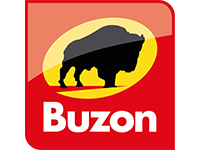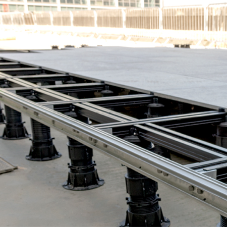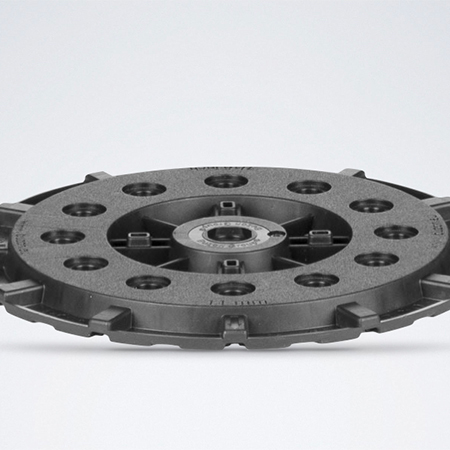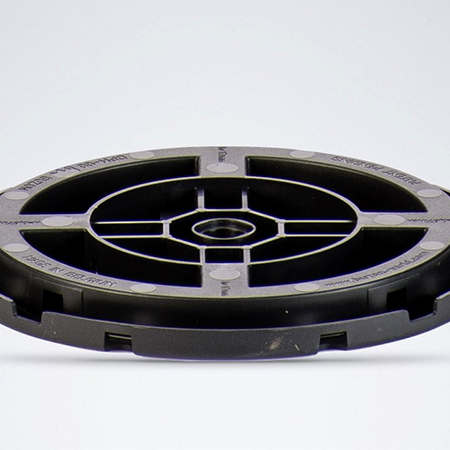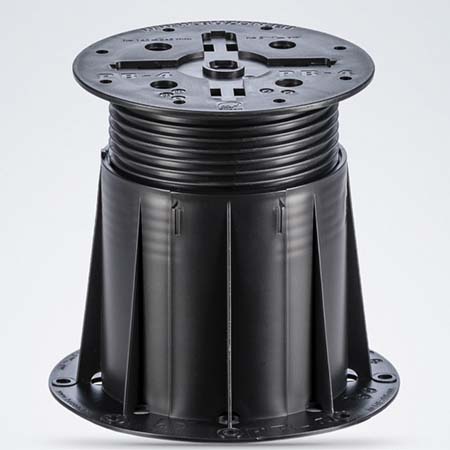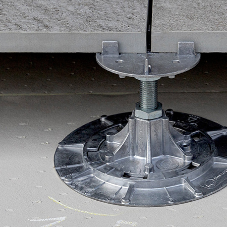This blog is an abridged version of an article published in the November 2023 edition of the Fire Protection Association magazine, and written by Wayne Richards of Buzon UK Ltd.
In the wake of the Grenfell Tower tragedy in 2017, stringent regulations have been put in place to ensure the safety of these outdoor areas, particularly in relation to fire. The post-Grenfell era has seen a significant shift in the way architects and developers approach the design of buildings, with a particular focus on outdoor spaces.
While the regulations for these specified attachments, such as balconies, are now clear and unequivocal, flat roof systems represent a different challenge. Unlike balconies, the requirements for roof systems leave room for interpretation that can potentially lead to the installation of non-compliant build-ups. To ensure compliance with safety regulations, it is crucial for fire assessors, engineers, and the Local Authority Building Control (LABC) to understand which areas fall under specific regulations.
Two primary definitions that come into play are those of roof terraces and balconies, and the National House Building Council (NHBC) and BS 8579 offer a clear distinction between the two:
1. Attached balconies are not over-habited or conditioned spaces and are typically bolted to, or cantilevered from, the external wall.
2. Roof terraces are roofs with general pedestrian access, often utilised for amenity or maintenance activities.
A Matter of terminology
The publication of BS 8579:2020 Balconies and Terraces in August 2020 defined balconies, whether thermally broken or cantilevered, as four main types: projecting open balconies, projecting enclosed balconies, recessed open balconies, and recessed enclosed balconies.
Importantly, BS 8579 states that for the purposes of fire, a balcony is not considered a roof (and vice-versa). However, BS 8579 notes that other forms of ‘balcony’, over-habited, or conditioned space are classified as roofs and so the same requirements are applied to them, i.e. BROOF(t4). This includes access terraces, walkways, and certain types of open and enclosed terraces.
Where a walkway is over cold space and on a residential building over 11 metres, we believe that only BS EN 13501-1 Class A fire-rated ‘non-combustible’ materials should be utilised rather than a BROOF(t4) system – subject to the exemptions in Approved Document B, B4, Regulation 7(3).
The LABC provides a clear definition of roof terraces: “A roof terrace is a roof with general pedestrian access. It may form a floor which may be utilised for use and enjoyment of amenity or maintenance activities. A terrace is a roof for the purposes of waterproofing and the design of waterproofing and drainage.”
Whilst the distinction between balconies and roof terraces are clear, there are still challenges faced when it comes to compliance for roof build-ups and explore the significance of the highest fire performance rating: BROOF(t4).
Roof coverings rated as a system
Prior to 2019, the National Classification System, BS 476- 3:2004 was used to determine external fire performance for roofs, which was often confused with the rating system used for construction materials.
Thankfully, this has been fully replaced by the European Classification System BS EN 13501-5. This classification system comes with five ratings: BROOF(t4), CROOF (t4), DROOF (t4), EROOF (t4), and FROOF (t4), with BROOF (t4) the highest rating and acceptable on any roof, in any situation, regardless of use and proximity to neighbouring buildings.
In order to receive a classification, roof systems are tested (and rated) as a complete build-up, rather than relying on the rating of the individual components or products as is the case with balconies (classification standard BS EN 13501-1).
The ‘system-led’ approach applied to roof terraces means that all components – from membrane right up to surface material – are rated as a whole. As such, the components of the tested system cannot be swapped or replaced for other products, unless the resultant new ‘system’ has also passed the correct testing or there is an appropriate TS 16459 Extended Application Classification Report.
BS EN 13501-5 refers to four separate roof tests. These tests measure the performance of a roof sample’s resistance to external fire exposure from penetration through the roof construction and the spread of flame over the roof’s surface.
Only Test 4 tests demonstrate compliance with the fire performance requirements in England, Scotland, Wales, and Northern Ireland. Test 4 evaluates a roof’s performance under the conditions of thermal attack with burning brands, wind, and radiant heat. It tests external fire spread and penetration by fire.
If a roof system is classified as BROOF (t4), there will be no penetration of the roof system within 60 minutes. It is often forgotten that a determining factor in which rating is required (B, C, D, E, or F) is how close the roof is to the property boundary – and therefore potential adjacent buildings. This is why a BROOF(t4) classification would be the preferred option for roofing materials in densely populated locations since no minimum distance is required between adjacent buildings. This classification is referred to as ‘unrestricted’ in England and ‘low vulnerability’ in Scotland.
The significance of BROOF(t4) certification
For those concerned with compliance and safety, requesting a copy of a terrace system’s BROOF(t4) certificate is a best practice.
Roof terrace designs include a wide array of finishing options, including concrete paving, natural stone, porcelain tiles, composite decking, and even artificial grass. Companies, including waterproofing manufacturers, pedestal manufacturers, and decorative finish manufacturers, extensively test the resultant systems to ensure their safety and performance.
Testing for BROOF(t4) certification is a lengthy and expensive process, with multiple tests needed to gain approval. Unfortunately, there are instances where components are swapped out for untested products in a bid to value-engineer and reduce costs, which will invalidate the BROOF(t4) Certification.
A particularly extreme example of this was the substitution of a BROOF(t4) classified artificial grass system for an unrated product, which was then laid on an 18mm timber deck with untested plastic pedestals and waterproofing. These were all installed on a terrace whose main function was to act as a smoking area. If there was a fire affecting a roof, the finishing layer must be consistent and stable. When using porcelain tiles or paving, if the substructure is not 100% true, they will rock and break, causing a risk of injury in an already dangerous situation.
Further challenges
In a significant development within the roofing sector, the Commission of the European Communities issued a decision notice on 6 September 2000, implementing The European Commission Council Directive 89/106/EEC as regards the external fire performance of roof coverings.
This decision relates primarily to fully covered roofs as commonly seen in inverted roof applications, and states that specific roof coverings can fulfil external fire performance requirements without the need for testing, mostly referring to roof tiles and non-combustible slate and metal materials. There is, however, an option to use untested products (i.e. waterproofing or insulation) that are intended to be fully covered by either gravel, sand/cement screed or 40mm stone or cement slabs. It omits to describe how the 40mm slabs should be correctly installed in order to be compliant and does not address the situation where they are included as part of a raised floor construction through the use of pedestals which create drainage voids and gaps.
The result of this is that the roof material would not be fully covered with the approved materials, and the British Standard BS 8579 warns that this method of construction might not satisfy the criteria in the Commission Decision and might need testing to verify BROOF (t4) performance.
An example of components used in a roof terrace build up. All components above the structural deck would need to be tested and rated together for a BROOF(t4) classification.
Learning from past incidents
For a real-world understanding of the risks associated with non-compliant outdoor spaces, look no further than the London Fire Brigade’s YouTube channel and social media outlets, which highlight many examples of roof fires.
These incidents underscore the critical importance of adhering to safety regulations, particularly when it comes to balconies, roof terraces, and outdoor spaces in urban environments.
In conclusion, as cities increasingly prioritise outdoor spaces in their urban planning, it is imperative that developers, architects, and regulatory authorities remain vigilant in upholding safety standards.
Balconies and roof terraces are more than just aesthetic additions; they serve as crucial amenities and, in some cases, potential escape routes in emergencies. Strict adherence to safety regulations, which include Class A1, A2, and BROOF(t4) certification are essential steps toward ensuring the safety and well-being of residents and users of these outdoor areas in our ever-evolving urban landscapes.
What is of immediate importance is for the roofing industry to provide precise directives regarding raised roof terraces, making it mandatory to conduct BROOF(t4) tests whenever plastic pedestals are in use. This will enable fire assessors and LABC officials to approve these structures without any lingering concerns about future risks.
Buzon supply a full range of Class A Fire-rated pedestals, the A-PED, and their PB, BC & DPH ranges have also been tested as part of BROOF(t4) systems. Contact Buzon UK for more details about the tested build-ups.
Read the complete article on-line or download the pdf.
Fire Safety of Balconies and Terraces
Image Gallery
| T | 020 8614 0874 |
|---|---|
| F | (020) 8977 0825 |
| E | info@buzonuk.com |
| W | Visit Buzon UK's website |
| Unit 6, Teddington Business Pk, Station Rd, Teddington, Middlesex, TW11 9BQ |
Products by this Company


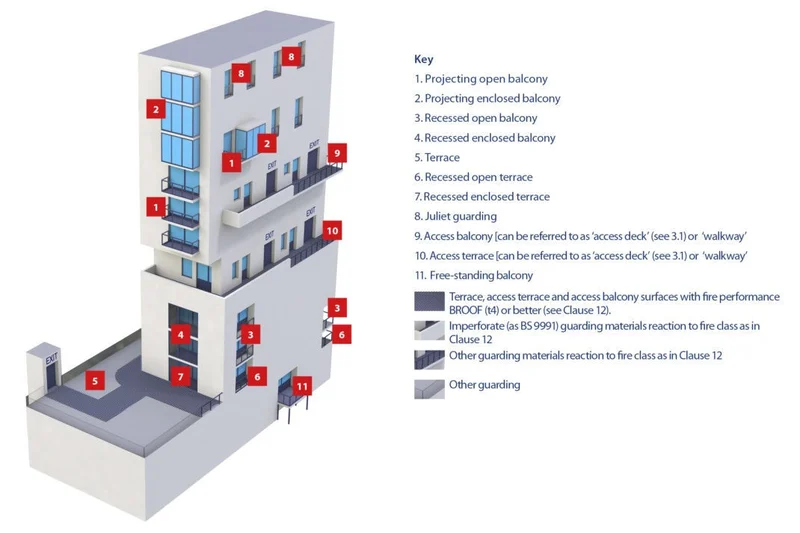
%20table-file146453.webp)
%20Example%20Build%20Up-file146454.webp)
